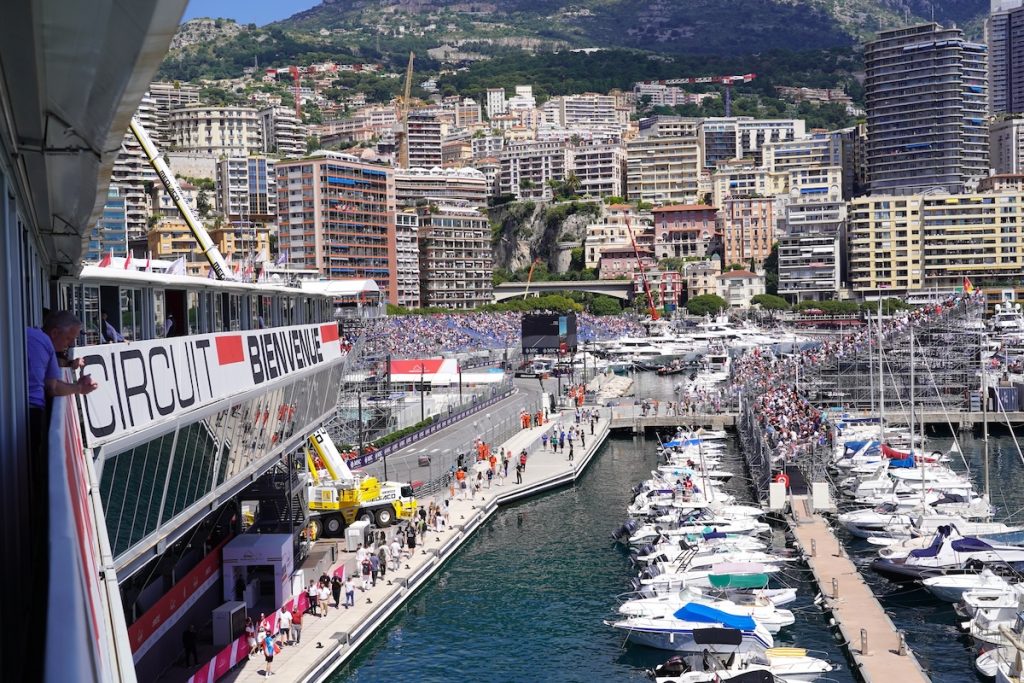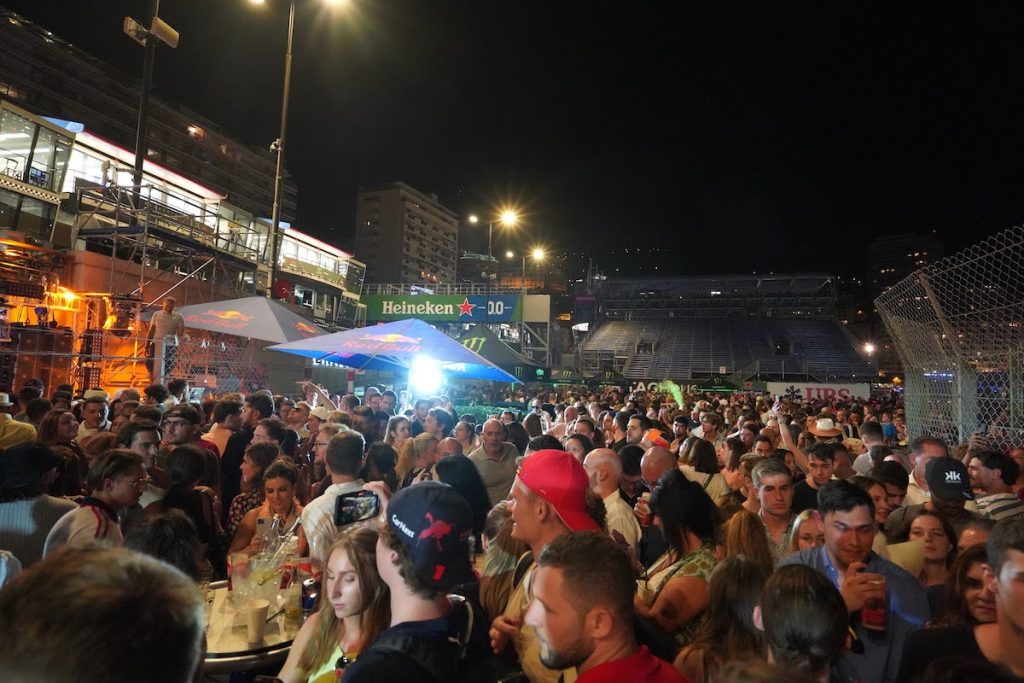
How long does the Monaco Grand Prix circuit take to build? And how do teams navigate the unique challenges of the iconic race weekend? We take a look at the numbers and the logistics behind the Monaco Grand Prix.
All images: © F1Destinations.com
Not only is the Monaco Grand Prix Formula 1’s most iconic race – it is also one of the most logistically challenging on the calendar. Transforming the city streets of the principality into a world-class race track for Formula 1’s annual visit in late May is a huge undertaking.
The unusual setup of Monaco’s tight confines has far-reaching impacts on the local residents, Formula 1’s teams, members of the support paddocks and fans attending the Monaco Grand Prix. Here’s how the unparalleled challenges of Monte Carlo impact those on the track and fans trackside!
How Long Does it Take to Build the Monaco Grand Prix Circuit?
In 2024, construction of the Monaco Grand Prix circuit began on February 19 – over three months before the Grand Prix. However, Circuit de Monaco is not set up just for Formula 1. The streets of the principality host up to three major events each year.
While the Monaco Grand Prix is the grand finale at the end of May, Formula E’s Monaco E-Prix takes place in late April. Since 2021 the all-electric series has raced on the full layout of Circuit de Monaco, having raced on a shorter layout prior to that.
Two weeks before the Monaco Grand Prix, the Historic Grand Prix of Monaco takes place biennially. The event has been a popular fixture on the motorsport calendar since it was first held in 1997, celebrating Monaco’s rich racing history.
The circuit setup begins around 10 weeks before the first racing action; the Monaco E-Prix. Road closures – and closures which impact on the principality’s bars and restaurants – are common during this period.
As Monaco occupies a relatively small space, the materials required to build the track each year are kept in storage units in nearby Nice and beyond the Italian border. That includes all of the necessary railings and barriers, tyres and wire netting to ensure driver and spectator safety, along with over 1.5 tonnes of grandstand structures. A whole host of transport is used to get the equipment into the principality, from trains to trailers.
It takes around 250 people to install the 21 kilometres worth of barriers and railings. The number of people working on the track multiplies by at least ten during the Monaco Grand Prix weekend itself, when volunteers, marshals and stewards help to ensure the F1 weekend runs smoothly.
After the Monaco Grand Prix ends, the roads – which open and close to the public over the race weekend – re-open just a few hours after the chequered flag falls and work goes on through the night to begin to return Monaco back to its non-racing state. After three months of set-up work, it takes only three weeks for the streets to return to their normal condition.
How do the Teams Adjust to the Demands of Monaco?
The Monaco Grand Prix weekend poses a unique challenge to Formula 1’s teams, for which precision planning and expert coordination is key. With such limited space within the principality, the expansive fleet of trucks which transport the teams’ equipment unload the necessary items before being parked up in towns elsewhere, beyond the French and Italian borders.
Some members of each team will arrive on the Friday before the race for some initial preparatory work on the garages to ease the workload later in the week. Trucks typically arrive on the Monday before the race. The final parts are unlikely to arrive before Tuesday, especially if the Monaco race forms part of a double-header of races; as it does in 2024.
As you can imagine, the delivery times for the trucks has to be precisely coordinated between teams – otherwise there would be quite a big traffic jam! It’s not just the teams trying to setup for the weekend, either. Formula One Management, TV crews and hospitality operators also need to set up their spaces for the all-important weekend too.
How the Teams Operate at the Monaco Grand Prix
Uniquely, the teams’ garages are split into two storeys at Circuit de Monaco, with the garages facing out onto the final sector of track, rather than the start/finish straight. Space is very much at a premium, with only limited room for the two cars and essential equipment. The garages are half the width of some of the larger ones seen elsewhere on the calendar.
Spare parts are kept upstairs and sometimes need to be transported through windows to the lower levels if they’re required over the race weekend! As a result of a lack of storage space, the teams try to cut down on spare parts for the Monaco race, compared to what they would bring to a normal Formula 1 event. It’s a risk, given the likelihood of picking up damage when threading cars at an average speed of over 150km/h through the principality’s tight streets.
With no room for a pit wall in the tight pit lane, the engineers and strategists also find themselves elevated above the main garage. It can lead to miscommunications and pit stop errors – just ask Daniel Ricciardo, who lost out on the win at the 2016 Monaco Grand Prix when a miscommunication meant that his tyres were not ready in time for his pit stop.
Where is the Monaco Grand Prix Paddock?
While the F1 paddock is usually located just out the back of the teams’ garages, that is not the case in Monaco. Instead, the paddock is a short walk south of the famous Rascasse corner, in the Quai Antoine 1er.


The paddock area is easy enough to navigate to when the track is open to pedestrians. When it’s not, you might need a map to find your way around the maze of staircases, buildings and footbridges to gain access to the paddock area!
Perhaps the most impressive structure in the Formula 1 paddock on Monaco Grand Prix weekend is Red Bull’s energy station, the floating motorhome complete with a rooftop pool (into which Christian Horner jumped wearing only a Superman cape after David Coulthard recorded the team’s first podium finish in the principality in 2006).
The Red Bull Energy Station has its own fascinating logistics, which sees it built in the harbour of coastal Italian city Imperia. After three weeks of construction, completed by a workforce of over 70 people, the 800-ton motorhome is then transported in two separate sections by tugboat in a journey which takes six hours.
Where are the Support Series Paddocks Located at the Monaco Grand Prix?
If you think things are challenging for Formula 1 teams, the teams from F1’s supporting series – Formula 2, Formula 3 and Porsche Supercup – face even bigger challenges. Tucked away from all the glamour, in a multi-storey car park, you’ll find the Formula 2 paddock.
Located within the Chemin des Pecheurs car park – nicknamed ‘Alcatraz’ by some members of the paddock – mechanics will be hard at work on the Formula 2 cars. It’s also where parc ferme and scrutineering areas are located, as well as catering.
With barely enough headroom for the teams’ transporters to fit, things in the makeshift paddock can become very crowded, as F2’s Director of Operations Marco Codello explained to Formula Scout in an extensive 2022 interview.
Perhaps the strangest part of the weekend for teams in the junior formulae is the journey from the paddock to the track before on-track sessions. The teams must negotiate open public roads, as they push the cars into place while following strict procedures laid out by race organisers.
As for the Formula 3 paddock? That is not even located within Monaco. Instead, Formula 3 teams prepare their cars and transport their equipment from the car park of the Monte Carlo Country Club, over the French border. The Porsche Supercup paddock, meanwhile, is located at Chapiteau de Fontvieille.
How Does Monaco’s Unique Layout Impact on Fans?
It’s not just those partaking in the race weekend who’ll notice Monaco’s unique logistical challenges – fans attending the race are also impacted. With limited accommodation available within Monte Carlo’s boundaries, and the available rooms often booked out early – and priced well beyond the budget of the average fan – the majority of spectators will base themselves outside of Monaco for the race weekend.


Thankfully, with reliable and affordable rail and public transport connections between Monaco and surrounding cities, like Nice, Menton, or even towns on the Italian Riviera, there are great options for the travelling F1 fan over the Monaco Grand Prix weekend.

With the roads which make up the street track re-opening at the end of each day’s on-track running, the Monaco Grand Prix gives fans a unique opportunity: to party on the track ahead of the race. On both Friday and Saturday night, the harbour area is turned into a hub of entertainment, with the nearby bars and restaurants opening up their doors to Formula 1 fans and the parties spilling out onto the final sector of track, which becomes the principality’s biggest outdoor nightclub on race weekend!


